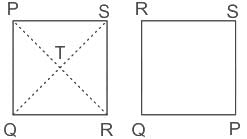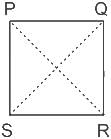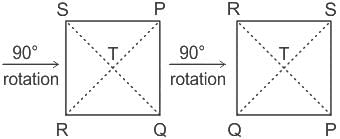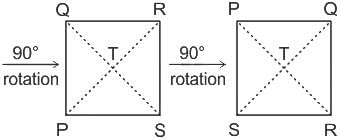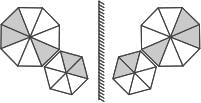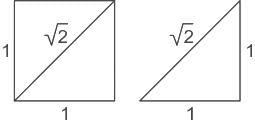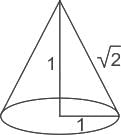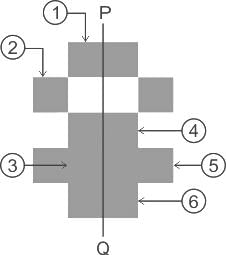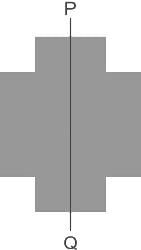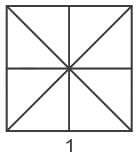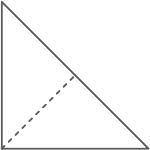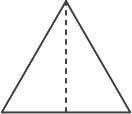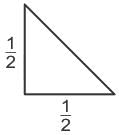Test: Rotation of Shapes - Electronics and Communication Engineering (ECE) MCQ
10 Questions MCQ Test - Test: Rotation of Shapes
Consider the following square with the four corners and the center marked as P, Q, R, S and T respectively.
Let X, Y and Z represent the following operations:
X: rotation of the square by 180 degree with respect to the S-Q axis.
Y: rotation of the square by 180 degree with respect to the P-R axis.
Z: rotation of the square by 90 degree clockwise with respect to the axis perpendicular, going into the screen and passing through the point T.
Consider the following three distinct sequences of operation (which are applied in the left to right order).
(1) XYZZ
(2) XY
(3) ZZZZ
Which one of the following statements is correct as per the information provided above?

Y: rotation of the square by 180 degree with respect to the P-R axis.
Z: rotation of the square by 90 degree clockwise with respect to the axis perpendicular, going into the screen and passing through the point T.
(1) XYZZ
(2) XY
(3) ZZZZ


Consider a cube made by folding a single sheet of paper of appropriate shape. The interior faces of the cube are all blank. However, the exterior faces that are not visible in the above view may not be blank.
Which one of the following represents a possible unfolding of the cube?


For the picture shown above, which one of the following is the correct picture representing reflection with respect to the mirror shown as the dotted line?

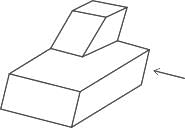
A block with a trapezoidal cross-section is placed over a block with rectangular cross section as shown above.
Which one of the following is the correct drawing of the view of the 3D object as viewed in the direction indicated by an arrow in the above figure?

Which one of the groups given below can be assembled to get the shape that is shown above using each piece only once without overlapping with each other? (rotation and translation operations may be used).

Corners are cut from an equilateral triangle to produce a regular convex hexagon as shown in the figure above. The ratio of the area of the regular convex hexagon to the area of the original equilateral triangle is
Consider a square sheet of side 1 unit. In the first step, it is cut along the main diagonal to get two triangles. In the next step, one of the cut triangles is revolved about its short edge to form a solid cone. The volume of the resulting cone, in cubic units, is ________
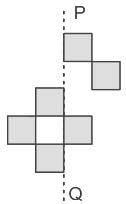
The least number of squares that must be added so that the line P-Q becomes the line of symmetry is ________.
Consider a square sheet of side 1 unit. The sheet is first folded along the main diagonal. This is followed by a fold along its line of symmetry. The resulting folded shape is again folded along its line of symmetry. The area of each face of the final folded shape, in square units, equal to _____.
We have 2 rectangular sheets of paper. M and N, of dimensions 6 cm x 1 cm each. Sheet M is rolled to from an open cylinder by bringing the short edges of the sheet together. Sheet N is cut into equal patches and assembled to from the largest closed cube. Assuming the ends of the cylinder are closed, the ratio of the volume of the cylinder to that cube is ______


